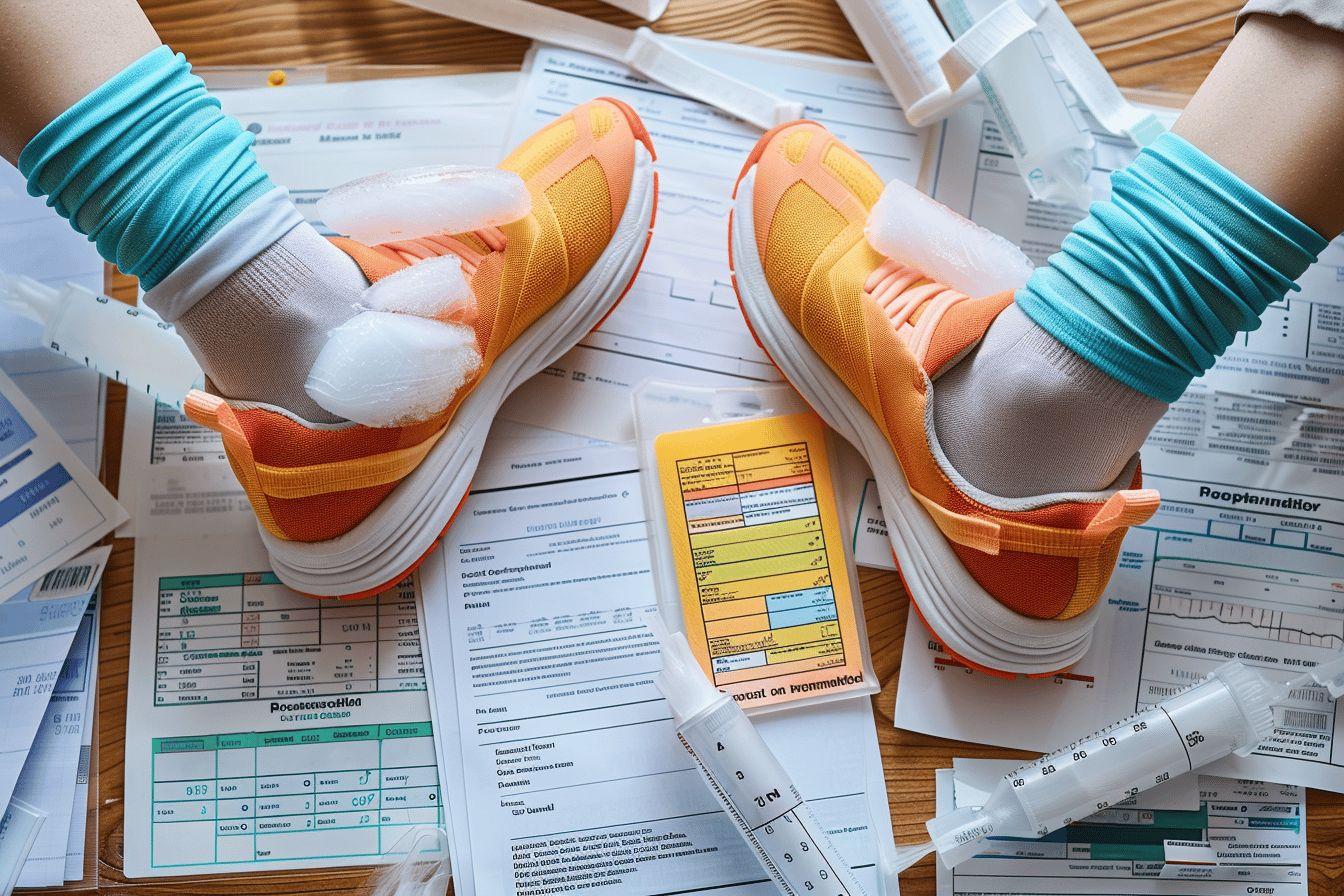This article examines the factors influencing the duration of sick leave for a heel spur and suggests appropriate solutions.
- The severity of the inflammation and the type of job are determining factors.
- The average duration varies from 3 days to 6 weeks depending on the severity.
- A gradual return and workplace adjustments are recommended.
- Prevention and long-term management are essential to avoid recurrence.
Heel spurs are A painful condition that can impair mobility and require time off work. The length of this time off varies depending on several factors, including the severity of the injury and the type of job. Let's take a closer look at the factors that influence the required rest period for this condition.
Factors Influencing the Length of Time Off Work
The length of time off work for a heel spur depends on several important criteria. Each case is unique and requires a personalized assessment by a healthcare professional. Here are the main factors to consider:
The severity of the inflammation plays a crucial role. A mild heel spur may require a few days of rest, while a severe form may require several weeks. Pain intensity and limitation of movement are key indicators for assessing severity.
The type of job is also a determining factor. A sedentary job may be able to be resumed more quickly than a job requiring prolonged standing or frequent travel. For example, an office worker may be able to return to work sooner than a mail carrier or store salesperson.
The patient's age and general health also influence recovery time. Older people or those with chronic conditions may require a longer convalescence period. It is essential to take these factors into account for optimal healing.

Estimating the average length of time off work
Although each situation is unique, it is possible to establish a general estimate of the length of time off work for a heel spur. Here is a summary table of average durations according to the severity of the condition:
| Heel spur severity | Average duration of sick leave |
|---|---|
| Mild | 3 to 7 days |
| Moderate | 1 to 3 weeks |
| Severe | 3 to 6 weeks |
Please note that these durations are indicative. The primary care physician remains the only one authorized to prescribe the appropriate duration of sick leave for each patient. This prescription takes into account the progress of healing and specific professional constraints.
To promote a quick and effective recovery, it is recommended to follow effective remedies to relieve heel pain caused by a heel spur. These solutions can help reduce the length of time off work.
Steps to Returning to Work
Returning to work after a stoppage due to a heel spur should be done gradually. Here are the recommended steps for a smooth return to work:
- Medical Assessment: An examination by your doctor is essential before considering a return to work.
- Part-Time Return: In some cases, a gradual return to work can be beneficial for a smooth transition.
- Workstation Adjustments: Temporary changes to the workstation may be necessary.
- Regular Monitoring: Regular follow-up appointments allow for adjustments to the return to work schedule if necessary.
Communication with your employer is crucial to organize a return to work that is adapted to your medical needs. In some cases, therapeutic part-time work may be considered to facilitate the transition.
Prevention and Long-Term Management
To avoid recurrences and reduce the risk of further sick leave, it is essential to adopt preventive measures. Long-term management of heel spurs requires a comprehensive approach including:
- Wearing appropriate, comfortable shoes
- Regularly engaging in stretching exercises
- Maintaining a healthy weight
- Using orthopedic insoles if necessary
It's worth noting that some Scholl shoes may be reimbursed by Social Security, which can help prevent long-term problems related to heel spurs.
Rehabilitation and strengthening Muscles play a crucial role in preventing recurrence. A physical therapist can develop a personalized exercise program to maintain foot flexibility and strength.
Alternatives to Complete Work Stoppage
In some cases, alternatives to complete work stoppage may be considered. These options allow for the combination of heel spur treatment and appropriate work activity:
Teleworking can be an attractive solution for office jobs. It allows you to continue working while limiting travel and promoting rest for the affected foot.
Temporarily adapting workloads is another possibility. The employer may assign less physically demanding tasks, allowing the employee to remain active while protecting their feet.
In some cases, the use of specific equipment such as an ergonomic footrest or a suitable chair may be sufficient to maintain professional activity. These adjustments should be discussed with the occupational physician.
It should be noted that heel spurs are often associated with plantar fasciitis, for which there are effective and natural remedies. Managing these two conditions together can help reduce the overall duration of sick leave.
Finally, the duration of sick leave for a heel spur varies considerably depending on the individual and the professional situation. Early and appropriate treatment, combined with rigorous medical monitoring, can optimize recovery time. Collaboration between the patient, the treating physician, and the employer is essential to ensure a return to work in the best possible conditions, while preserving the employee's long-term health.





Leave a comment
This site is protected by hCaptcha and the hCaptcha Privacy Policy and Terms of Service apply.